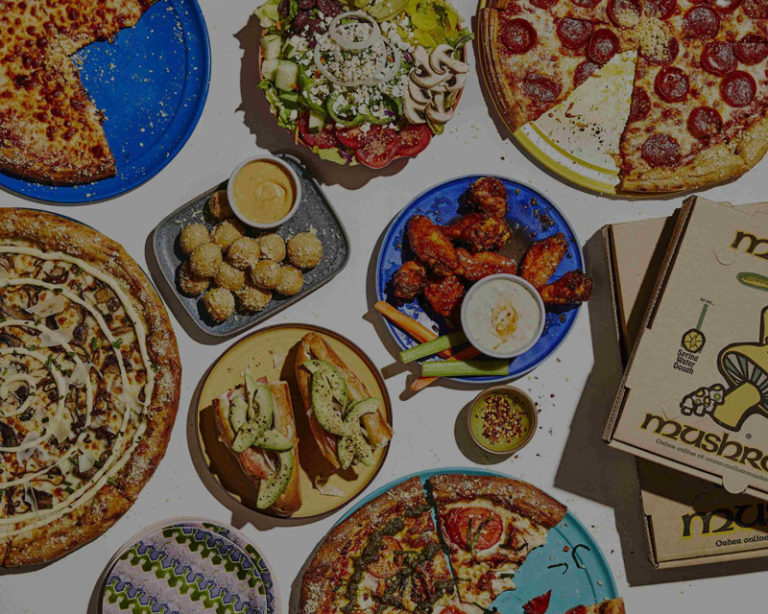Practical Advice for Naming Your Brand
There are few things more challenging throughout the branding process than naming a business or product. It takes condensing a mountain of information into a few words that perfectly capture a brand that accurately encompasses who you are, and meanwhile acts as the first impression your brand will hold onto forever. It’s the thing that needs to stick right away, because if it doesn’t, it will leave you starting at a disadvantage. Daunting, right?
One of the most important steps is choosing a name. And when it comes to this decision, some brands are lucky enough to have a great name that naturally makes sense. Occasionally, using a creator’s name, a city reference, or a piece of industry lingo appropriately falls into your lap and perfectly fits the bill. That’s great. Congratulations, if that’s the case.
But, a majority of the time, once a product or brand starts to take shape, finding the perfect name can pose a more significant challenge.
While honing in on your name, there are a few factors worth considering to help you find the one that best suits you.
Clever names lose novelty.
A pun or gimmicky name may feel fun, but can easily grow tired for both you and potential customers. The fried chicken restaurant named “Fry Me to The Moon,” or dog groomer called “Indiana Bones” might seem playful at first, but will likely grow old fast as the novelty wears off. Instead, choose a name you can grow with: one that represents you in the way you want to be seen, and gives at least some insight into what you’re offering.
Your name should be smart. It should also be fun, if that’s what you’re after. But, don’t let getting caught up in cleverness distract from what you do.
Practicality should be a guide, not an obstacle.
When you start from scratch with naming, it can be tempting to go the route of simply choosing what’s available based on domains and social handles. Those are important factors to consider, but availability shouldn’t dictate your name.
If you settle on a name you love, and the obvious domain or handle has already been claimed, use this “setback” as an opportunity for creativity. Harley Davidson’s stock ticker symbol, for example, is ‘HOG’ because Home Depot already had the obvious choice of ‘HD’. Not only is this perfectly brand appropriate, it demands more attention thanks to a touch of well placed creativity. Move a little outside the box when necessary and make implementing the right name a priority.
Brainstorm. A lot.
Word association is a fantastic exercise for naming purposes. You’ll often find that even simply writing about your brand will open up your naming possibilities.
Ask yourself “What does my brand do/create?” and write down every word you can think of around those ideas. Then visit the thesaurus (or anagram tool, or translating service) to see what else appears. You may be surprised by what comes out of the exercise.
Trends die. Good names stick around.
You probably have a “designer” friend on social media who started something called “Rosemary & Birch” or some other combination of flowers and woodland animals with an ampersand dividing them. This is not a bad brand name. But it is a trendy, mostly meaningless one. It does not give potential customers any insight to what you do, can be easily ignored in a sea of sameness, and does no work on behalf of your brand to attract business.
While it’s okay to choose a name that fits with popular culture, consider how well the name will age. Not only is it unlikely to be the best name for you, it will date your brand with all the other trend followers that started brands around the same time. Picking a name solely for its trend value will drag you down and cause you to stand out less in the long term.
Say what your brand does. Or don’t. But, maybe.
This ambiguous piece of advice has a point. There’s no magic formula for naming your brand. Sometimes, the no frills dive bar on First Avenue should just be called the “First Avenue Pub.” Sometimes, calling it “Dr. McManimum’s Drink Emporium” will work better. There’s a different fit for everyone, which is why the experimentation and exploration phase of naming is so important. What matters most is giving your brand a name that is memorable, helps tell your story, and remains relevant as your business grows.
Brand naming in action.
My agency helped name JumpSpark, a Jewish teen group previously called “The Atlanta Jewish Teen Initiative.” Obviously, the original name is not a bad one. It defines who this group is for, their affiliation, and gives you a quick idea of who they are without the need for explanation. But for a Jewish teen organization aimed at getting adolescents involved in the community and excited about their faith and culture, “Atlanta Jewish Teen Initiative” was a mouthful that wouldn’t exactly bring the young folks in droves.
To start the naming process, we spent time with program leaders and participants, went through a branding workshop with them, and brainstormed together — both separately as an agency and in collaboration with our client.
Finally landing on the name JumpSpark took a significant amount of time and work, but it clicked almost instantly as an obvious fit once we found it. A “jump spark” is defined as “a spark produced by the jumping of electricity across a gap.” It’s a connection. A conduit for something much larger. And that’s exactly what the organization does — linking Jewish teens with their community, and filling in gaps that can spread opportunities to grow.
“JumpSpark” is a successful name for a few reasons:
-It’s short and punchy: a nice departure from the clunky previous name.
-It’s easy to remember and will stick with people after hearing it.
-It has a story that connects to what the brand does, and can be quickly explained if asked.
-It’s smart without going over anyone’s head and clever without relying on a puns or gimmicks.
Your ideal name is unique to your business, and the goal is to find one you can stand behind with confidence. Give yourself time to explore and sit with your options. Experiment. Share and test it out with others. Go outside of the box. Don’t hitch your wagon to what others are doing. Make it unique, but definitive. And finally, it may sound corny, but have fun.
This is your brand. It’s going to grow and evolve with you and should be something you truly love. Take time to enjoy and embrace the process even if it feels long and arduous. You and your brand will appreciate the effort in the long run.
Don’t Let Your Website Drive Your Brand — Give Your Brand The Wheel
Does this situation sound familiar to you? You hire an agency to redesign your website. After some initial discovery, they come back to you with a variety of homepage iterations. Maybe some people on your team like one approach, while others like a different one, and some don’t like any of them at all. The process lurches forward, stalls, backtracks and takes twice as long (and costs twice as much) to complete as originally planned. Six months after launch, you’re still asking for changes to foundational pages, key visual elements and core language. You’re never really satisfied with it. Two years later, you start all over again.
I’ve noticed that when website redesigns turn into horror stories, it’s almost always because both the agency and the client are trying to solve a branding problem by building a new website. The client might think they know their brand, but if you ask five people on the leadership team to articulate it, you’ll get five different answers. They don’t really know who they are, where they’re going or how to get there, but they start building the website anyway in hopes that they’ll figure it out along the way. No wonder so many websites end up such a mess.
Your website is not the answer to your organization’s brand challenges, and your website should never take the wheel of your brand. Branding challenges need branding solutions.
But here’s a little secret: Once you figure out your brand, building your website doesn’t have to be so hard.
Website Design Is A Wasteful Way To Discover Your Brand
Someone I know inside the organization has since told me that they’ve had so many change orders that they’ve already paid double the originally quoted price. They’ve now rehired the same agency to redo their logos, which they’ve decided they don’t like. And they’re still not happy with the site, so they’ll likely end up spending more.
If you look closely at what happened with this client, you can see that they are in the process of figuring out their brand; they’re just doing it backward. They’re letting the website drive a stealthy branding process that is inefficient, inconsistent and ultimately less authentic and less likely to serve their goals.
They’re choosing their brand colors, logo, fonts and photo styles through the costly work of homepage iterations and change orders — and probably not fully considering whether they’ll work well in print ads, on t-shirts or on Instagram.
They’re stumbling along to the structure of their brand story through navigation decisions and letting common web design practices (a.k.a. “what everybody else is doing”) shape their narrative rather than taking a deeper look at their brand’s true story and letting that drive navigation.
They’re even roughing out their voice and tone through writing page titles, headlines, copy and calls to action, but none of it is guided by a strategic understanding of their brand message and how it should best be told.
You can see that these winding roads are slowly getting them closer to some approximation of their brand, but what a wasteful way to get there. The requirements and common practices of web collateral have played an outsized role in defining their brand’s destination. And as they create other marketing collateral that’s merely derivative of their website, much will likely be lost in the translation.
Brands Drive Efficiency, Consistency And Authenticity
My agency recently rebranded a nonprofit client that presents musicians in multiple venues all over Atlanta. Their old website included a very long history of the organization; it was basically an exhaustive “about” section. The history was well told and interesting, and it’s common practice for organizations to provide this kind of background. It all looked like good web design practices at first.
However, in focusing on developing their brand prior to a website redesign, we all came to understand that their true mission was to lift up local musicians and help them succeed. Their brand wasn’t about the history or the leadership of the organization. It was about the musicians. The musicians were what mattered.
When it came time to develop the new website, the long history went away and was replaced by in-depth stories about the musicians. Website imagery shifted from show posters and crowd photos to close-ups of the musicians. For every decision we made about the website redesign, we asked, “What serves our mission to lift up the musicians?”
To build your brand efficiently, consistently and authentically, I believe you have to work from a deeper understanding of your brand than the website design process can give you. Consider the demographics, motivations and ethos of your audience, as well as the value you’re offering and the message that best conveys that. Consider the experiences and connections you want to create with your customers or clients and the fundamentals of your brand identity.
When you define your brand first, you go into the web design process already knowing your color palette, photography styles, logos and fonts. You know your brand story and can let that guide your navigation. You know your messaging, voice and tone, so you know what your headlines and calls to action should say.
Apply best practices for information architecture and user journeys, and the website almost builds itself. Design choices are obvious. Most of your content is already written. And because you first took the time to get your brand right, the core pages and foundational messaging should endure for years to come.
In the end, your website and all of your other marketing collateral will better connect with your audience, serve your brand’s goals and support your organization’s growth. It can be easy, but only if you let your brand take the wheel.
Why Branding Takes So Long And Why It’s Worth The Wait
When my agency tells a client their branding or rebranding process will take months, they often ask me, “Why does it take so long?” When we were new and hungry for clients, it was sometimes hard to insist that, no, we could not whip up a quick logo, a color palette and some typography guidelines. And no, we could not complete it in two weeks.
But I did say no. I knew that rush jobs wouldn’t serve the success of my clients or my agency. Instead, I’ve worked hard at answering the question. Most prospective clients then understand the value and support the process. Some don’t. One client parted ways with us because he said we were “too strategic,” but his complaint was one of the best compliments we’ve ever received.
A brand is a valuable asset, a capital investment in intellectual property. A 2017 study by intellectual capital firm Ocean Tomo found that 84% of the value of S&P 500 companies was in intangible assets. They estimated that one-quarter of that value was attributable to the companies’ brands.
PROMOTEDhttps://3abfeb3575643c5548b4efe0c4795d3d.safeframe.googlesyndication.com/safeframe/1-0-38/html/container.htmlhttps://3abfeb3575643c5548b4efe0c4795d3d.safeframe.googlesyndication.com/safeframe/1-0-38/html/container.html
As technology continues to multiply opportunities for people to experience your brand, it’s more important than ever to tell your story consistently and responsively across hundreds of touch points. This requires a lot of careful planning, but if your brand may represent 20% to 25% of your company’s value, isn’t it worth the time to do it right?
Not Just A Pretty Logo
A brand is much more than a name, a logo and a color palette. It’s an expression of your mission, values and vision. A plan to achieve your goals and ambitions. An experience that connects you with your customers, clients, employees, investors and other stakeholders. A system and the tools to build that connection over time.
A brand is not just a pretty logo. It’s a plan to support your core business goals and grow the value of your company.
Things That Take A Long Time
1. Facilitating Internal Alignment
Before any of the work of creating your brand can begin, your agency needs to understand your organization, marketplace and goals. This is not just for the agency’s benefit.
A successful brand is built on a foundation of full internal alignment around your identity, goals and vision. It’s normal, even healthy, to have internal disagreements at the beginning, but it’s important to resolve these differences before any branding decisions are made.
During discovery, your agency will facilitate discussions and help you find consensus. Their outside eyes can offer perspectives that bring all stakeholders together. This takes time, but your agency needs that clear direction to inform its creative decisions. And your organization needs unified internal support to bring your new brand to life.
2. Creative Brief
The creative brief distills all the insights and decisions of the research and discovery phase — the consensus understanding of your identity, market position and goals.
It’s a critical document, and it’s important to take the time to get it right. The brief will guide everyone on the agency’s creative team: designers, writers, photographers, strategists, etc. It’s a unifying document for your internal team as well, informing your decisions as the branding process proceeds.
3. Creative Exploration
Even after the creative brief is finalized, your agency shouldn’t rush to draw and draft. To ensure the brand is unique and authentic to your organization, they will first look for inspiration in everything that informs your identity.
My agency once scanned 100-year-old documents from the archives of a university we were rebranding, drawing on their long history for visual direction. For a music nonprofit, we did a deep dive into the hype sticker culture for vinyl records, a key element of their mission.
Whatever the cultural, historical, artistic, scientific and other contexts of your undertaking, your agency should take the time to explore them well. They’ll then synthesize their initial ideas into a concrete creative direction — colors, imagery, foundational language, etc. — that’s well aligned with the creative brief.
4. Creating Brand Deliverables
Notice how much work has been done prior to beginning this step. Here’s where an agency designs a logo and its variations, chooses typography, writes a tagline and key language, and produces all the rest that customers will see.
Crafting quality brand assets does take some time, but when an agency completes the earlier work thoroughly and well, this phase should go smoothly. There is always an iterative process of feedback, revisions and tweaks, but even the first draft should feel 85% there.
5. Creating Tools
You have your logo, your tagline and all the other brand assets. So you’re done, right? Not if your agency is preparing your brand to succeed. Now it’s time to develop the tools you need to build your new brand.
Some are familiar static documents: brand guidelines and a voice and tone guide. These are important, but they’re not enough. Today, a branding agency should also develop digital tools that empower your team to create brand-consistent marketing collateral across all the touch points your brand can reach in the digital age.
These can be simple blog or email templates, or more sophisticated digital tools that make it easy to generate branded webpages or social media posts. Developing this technology takes more time, but it equips you to build your brand efficiently and effectively, scaling rapidly in a technology-driven world that’s moving faster every day. (And you won’t be forever dependent on your agency to produce every piece of branded content.)
The Payoff Of Patient Persistence
In Interbrand’s annual Best Global Brands report, which informed the Ocean Tomo study of S&P 500 companies, the authors found “enduring proof that investment in long-term brand-building enables businesses to thrive over time and survive market volatility.”
Building an effective brand takes some patience and persistence. You’re aligning your organization around a shared identity, goals and vision. You’re creating a strategy that will position your organization to achieve your goals. You’re investing in your organization’s value and ambitions. It’ll take a while, but it’s worth the wait.












